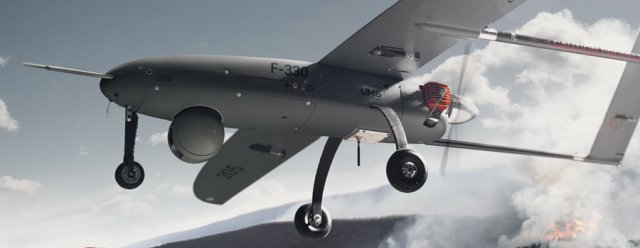QinetiQ is to demonstrate the use of Remotely Piloted Air Systems (RPAS) in tackling environmental issues in a one-week project on the Welsh coast in November 2015.
In a project with the Welsh Government and Snowdonia Aerospace LLP, QinetiQ will highlight the potential of RPAS applications in the areas of fisheries protection, flood risk management and coastal erosion monitoring. The initiative will be the first major showcase of Snowdonia Aerospace Centre (formerly Llanbedr Airfield) as part of the unique West Wales RPAS test and evaluation environment and associated segregated airspace.
The demonstration will consist of two scenarios; one exploring the use of RPAS in fisheries protection, and the other in managing the threat to the Welsh coast from flooding and coastal erosion.
In the fisheries protection scenario, a remotely piloted aircraft will seek to locate and identify participating fishing vessels and determine their intent. This will assess the potential for RPAS to support Natural Resources Wales in its commitment to doubling sustainable growth of aquaculture and achieving Good Environmental Status for its territorial waters by 2020.
The flooding and coastal erosion scenario will see the aircraft survey the coastline to monitor water levels and identify areas that may be vulnerable to flooding or collapse. Around 60 per cent of the Welsh population live in coastal areas, with an estimated 84,731 properties at risk from tidal flooding. Around 2,000 properties will be at risk from coastal erosion over the next 100 years if there is no active management. This exercise will examine the possibility of providing an early warning system for these events, enabling better preparedness and timelier response.
Jeremy Howitt, Unmanned Services Campaign Manager at QinetiQ, said: “This is an exciting opportunity to demonstrate the potential for RPAS to be used as part of a multi-layered approach to environmental protection. Through this project we will identify ways in which RPAS technology and QinetiQ’s unique expertise could help to improve capability in fisheries protection and coastal change monitoring, providing value for money for the taxpayer. It is an excellent showcase for Wales and QinetiQ, which are well-positioned take leading UK and EU roles in the demonstration of medium and large-scale UAVs.”
Economy Minister Edwina Hart said: “This will be the first trial of its kind in the UK and positions Wales at the forefront of the drive to advance civil applications for remotely piloted systems. Significant infrastructure investment at Llanbedr, which complements the existing infrastructure at the West Wales UAV Centre at Aberporth, means Wales is ideally placed to maximise these emerging opportunities. Apart from the potential economic benefits it also illustrates how Welsh Government’s environmental obligations can be supported by the adoption of this technology and deliver value added benefits.”
Dr John Idris Jones, Chairman of Snowdonia Enterprise Zone Advisory Board, said: “Our vision is to create a centre of excellence for test and development flying of remotely piloted systems at Llanbedr – a strategically important site within the Enterprise Zone. These trials mark an important step forward and ensure we are in pole position to take advantage of the high growth potential that is forecast in civilian applications for these systems.”
Lee Paul, Chief Executive Officer of Snowdonia Aerospace LLP, owners of the former Llanbedr Airfield said: “We, with the support of the Welsh Government and Qinetiq, continue to invest substantially in the airfield’s infrastructure and its facilities to meet the demands and aspirations of the rapidly expanding RPAS commercial sector. Our aim is to provide a second-to-non facility and environment to enable the UK to be a leading forerunner in the growth of applications of this nature. We are delighted to host this programme as the first of many and are busy in discussions with a number of other potential customers whom are keen to take advantages of this unique facility.”
The aircraft that will be used for the demonstration is an F-330, manufactured by Unmanned Services Group and flown by two operators on the ground at the Snowdonia Aerospace Centre. The F-330 has a wingspan of 3.3m, weighs 21.5kg, can fly for up to eight hours and has a data link range of approximately 50km.
Discussions are also underway to see whether the technology can be used to monitor protected marine mammals and birds off the Welsh coast.
Mike Camplin, Senior Marine Monitoring Ecologist & Marine Monitoring Team Leader at Natural Resources Wales, said: “Monitoring the wildlife around our coastline can often be difficult and we’re interested to see whether this technology can help us get a better picture of species such as bottlenose dolphins and birds, such as the red throated diver.”
Source: Press Release

